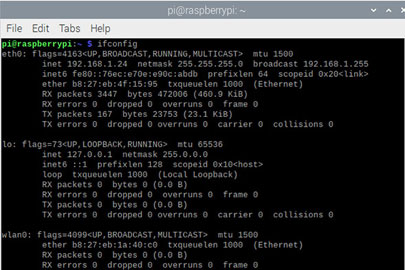

However, using the “ifconfig” command is not the only way for you to get your MAC address. You successfully found your MAC address on Linux. Note : if you are dealing with a virtual machine, or if you are currently renting a VPS, you may be assigned a virtual MAC address that is not linked to a specific vendor.Īlso, if you have multiple network interfaces, they will all display their own individual addresses. The first three triplets are reserved for the OUI vendor (02:42:35 being the OUI vendor, and 54:98:2a the specific MAC address). In this case, you are interested in the layer 2 information, more precisely the ether MAC address.Īs you can see, when running the “ ifconfig” command, my current MAC address is 02:42:35:54:98:2a.

Layer 2 information : the information you are interested in : the MAC addresses as well as the layer 2 protocol used by the network card (in this case Ethernet).Network card general information : if the card is up or down, if it is running on unicast or multicast and its MTU.replace with yours.For this network interface, you are presented with multiple different information : This workaround is imperfect because connect isĪctually sending a SYN packet rather than an ACK.ġ92.168.1.*: Range of IPs. Unprivileged user tries this, the connect workaround discussed previously is used. The -PA option uses the same default port as the SYN probe (80) and can also take a list of destination ports in the same format. So remote hosts should always respond with a RST packet, disclosing their existence in the process. Such an ACK packet purports to be acknowledging data over an established TCP connection, but no suchĬonnection exists. The difference, as you could likely guess, is that the TCP ACK flag is The TCP ACK ping is quite similar to the just-discussed SYN ping. Network, they can be a practical and efficient approach. But for system administrators monitoring an internal For this reason, ICMP-only scans are rarely reliable enoughĪgainst unknown targets over the Internet. Unfortunately for network explorers, many hosts and firewalls now block these packets, rather than Packet to the target IP addresses, expecting a type 0 (echo reply) in return from available hosts. The standard packets sent by the ubiquitous ping program. In addition to the unusual TCP, UDP and SCTP host discovery types discussed previously, Nmap can send The list provided by list scan of every single IP and host name. Knowing how many hosts are up is more valuable to attackers than It allows light reconnaissance of a target network Scan, and can often be used for the same purposes. This is by default one step more intrusive than the list This is often known as a “ping scan”, but youĬan also request that traceroute and NSE host scripts be run.

sP (Skip port scan): This option tells Nmap not to do a port scanĪfter host discovery, and only print out the available hosts that Nmap: Network exploration tool and security / port scanner. This is from my question and answer in Ask Ubuntu.
/001-how-to-find-your-ip-and-mac-addresses-in-windows-4d361aa9c84240ceabf4c635f035018c.jpg)
Linux command to find mac address install#
It's typically not installed so you'll have to go download it and install it manually.
Linux command to find mac address for mac#
If you want to sweep the entire LAN for MAC addresses you can use the command line tool fing to do so. ping statistics -ġ packets transmitted, 1 received, 0% packet loss, time 0ms If you just want to find out the MAC address of a given IP address you can use the command arp to look it up, once you've pinged the system 1 time.


 0 kommentar(er)
0 kommentar(er)
